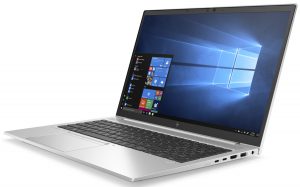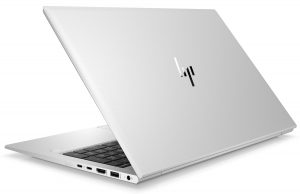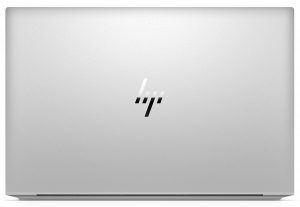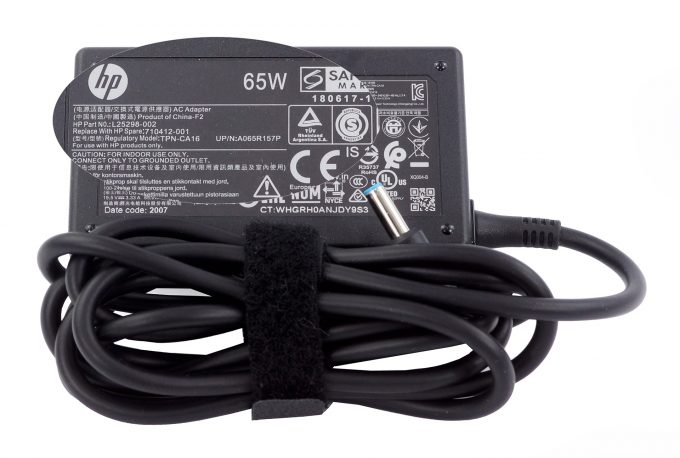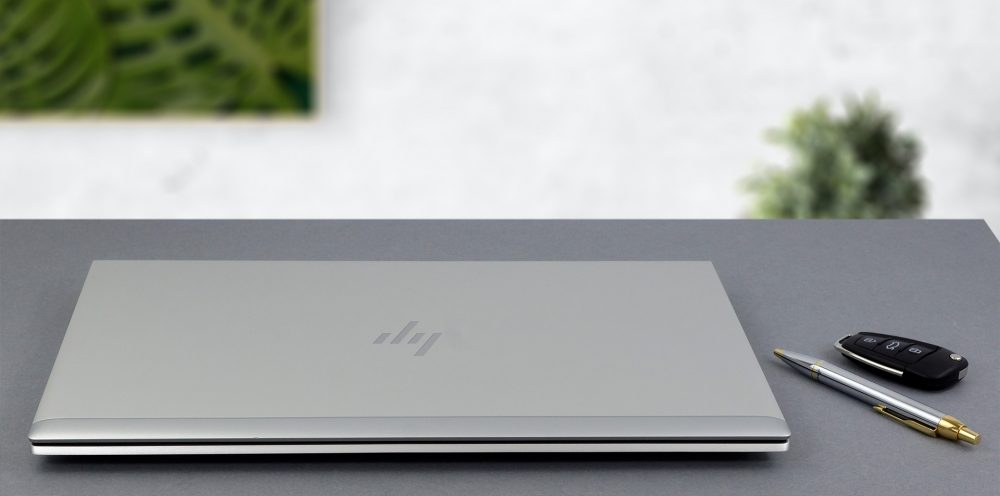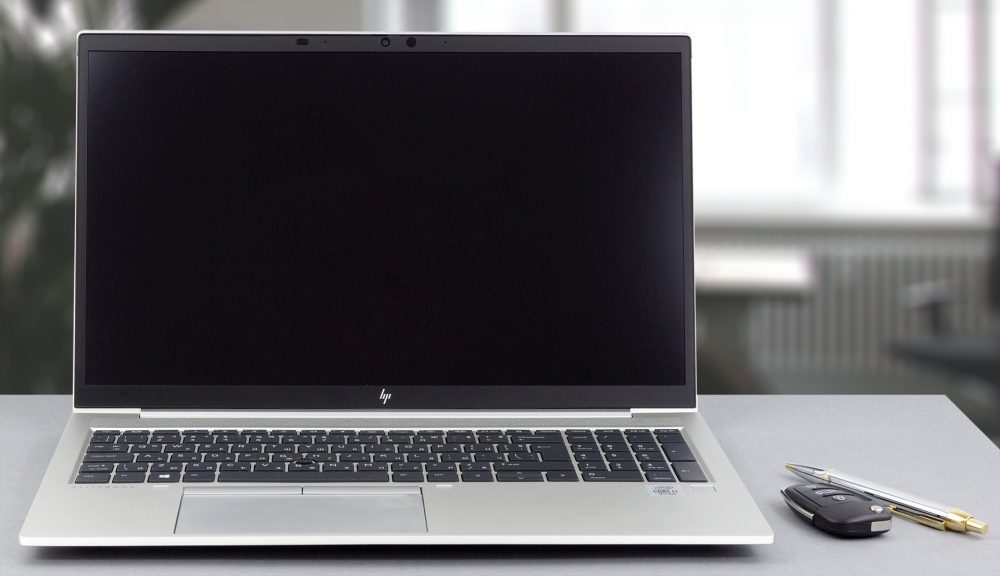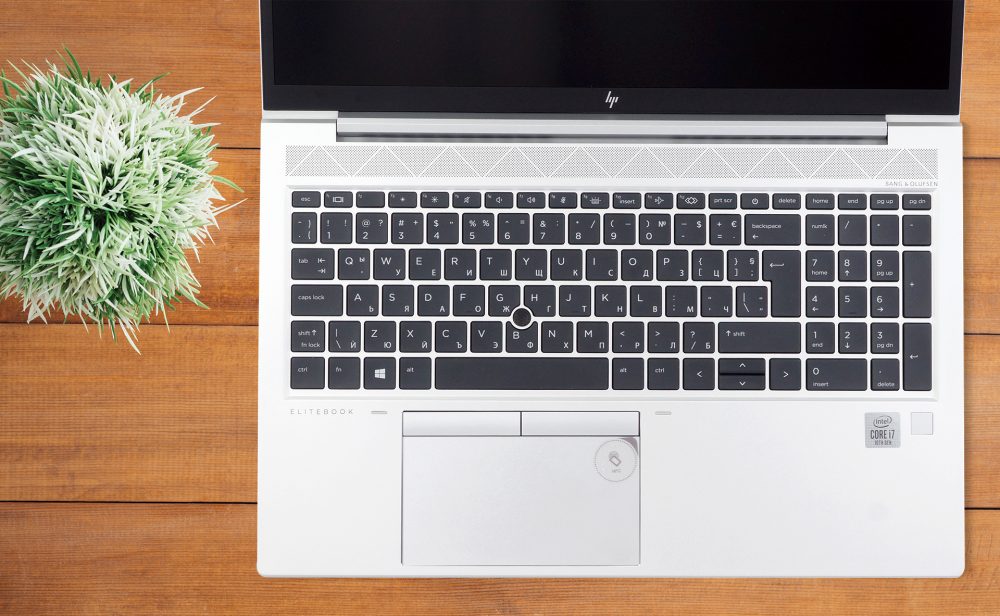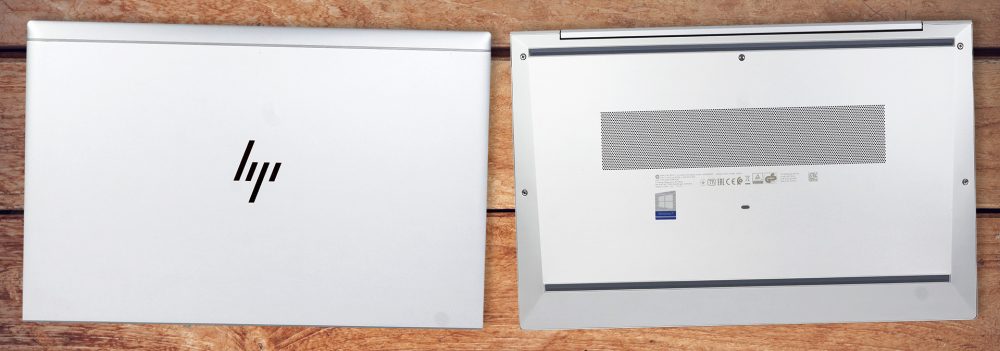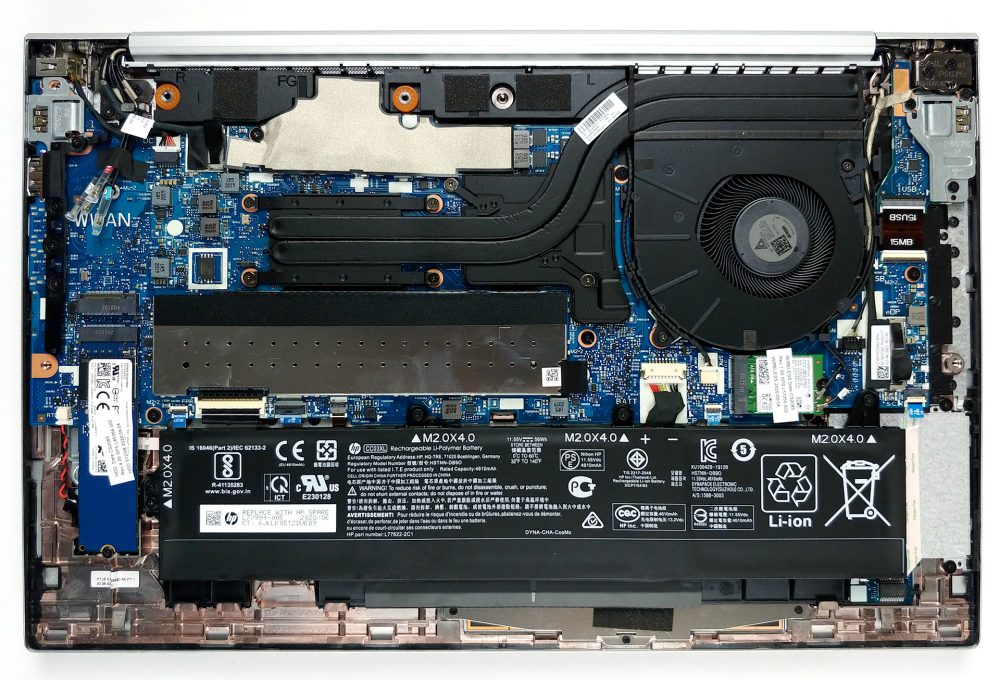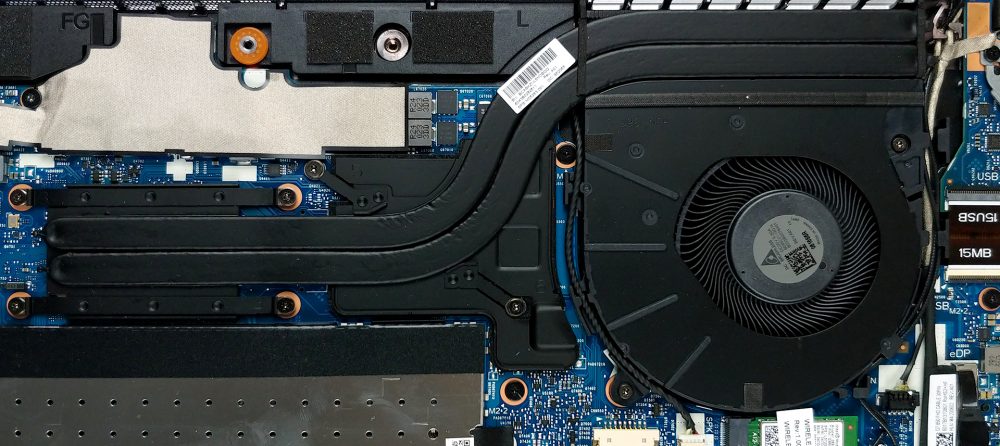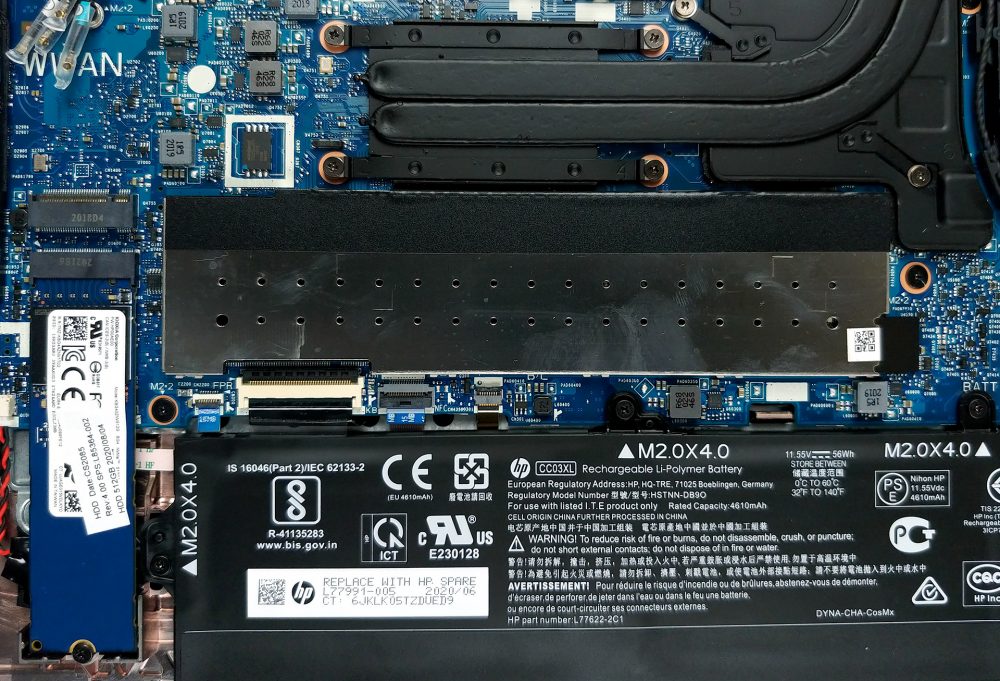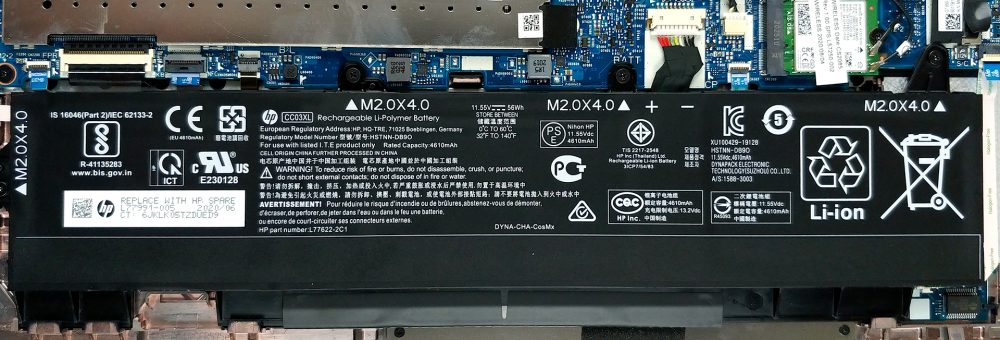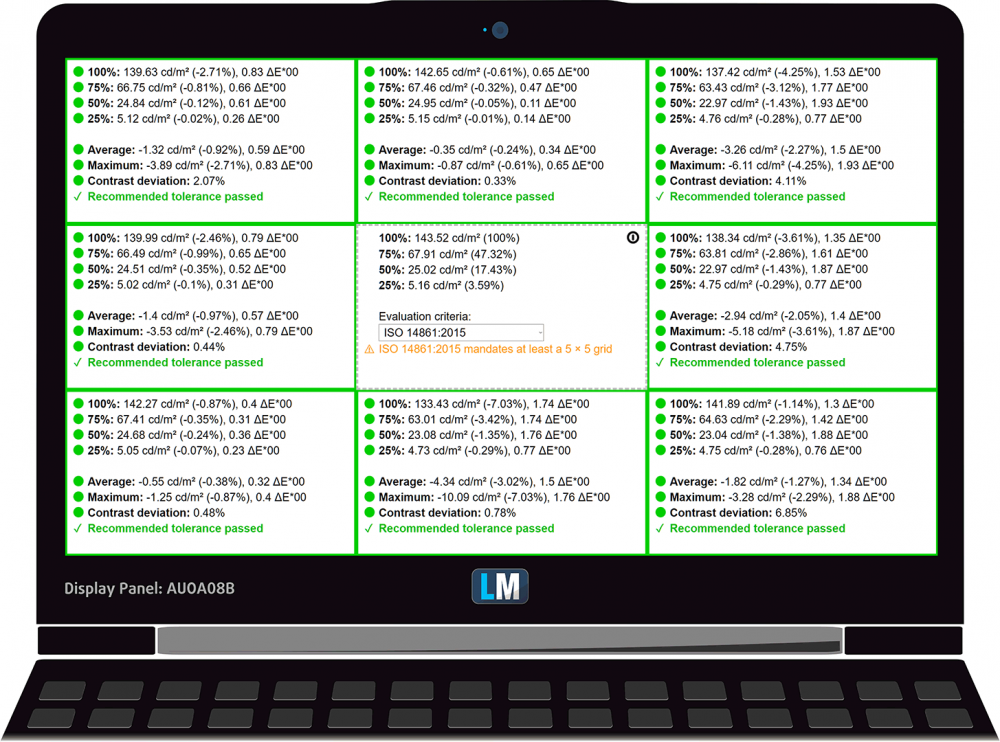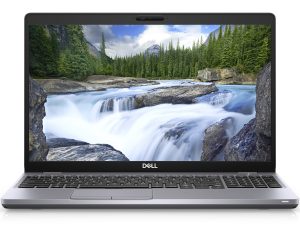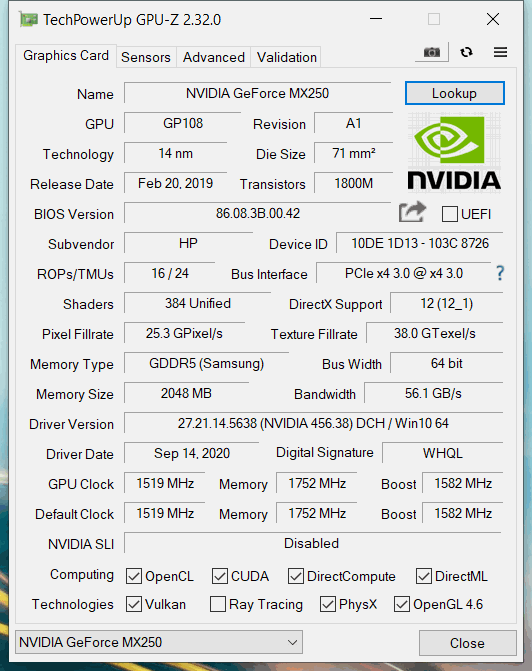HP EliteBook 850 G7 review – a great asset to every business
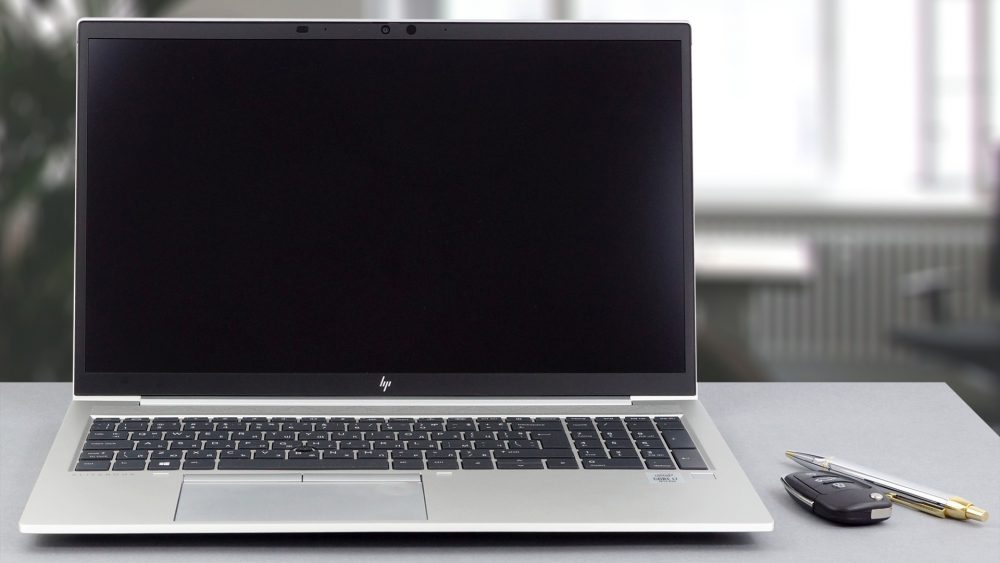 Finally, HP has redesigned its top business lineup. The EliteBook was in great need of a fresh body since the last one was around for a couple of years now. Moreover, this device is aimed at a pretty pretentious segment of the market, so it won’t be harmful to deliver something different once in a while.
Finally, HP has redesigned its top business lineup. The EliteBook was in great need of a fresh body since the last one was around for a couple of years now. Moreover, this device is aimed at a pretty pretentious segment of the market, so it won’t be harmful to deliver something different once in a while.
This notebook comes with Comet Lake-U processors and an optional GeForce MX250, so it should be pretty capable of handling your daily workload. What is more impressive is the upgradability, and the security enhancements you get. And while we are going to tell you about the former later in the video, it won’t harm anyone to say, that the EliteBook 850 G7 has both IR face recognition, fingerprint scanner, and all of the HP security goodies you can think of.
You can check the prices and configurations in our Specs System: https://laptopmedia.com/series/hp-elitebook-850-g7/
Contents
Specs Sheet
- HDD/SSD
- up to 1000GB SSD
- M.2 Slot
- 1x 2280 PCIe NVMe 3.0 x4 See photo
- RAM
- up to 64GB
- OS
- Windows 10 Pro
- Battery
- 56Wh, 3-cell, 56Wh
- Body material
- Aluminum
- Dimensions
- 359.7 x 233.8 x 19.2 mm (14.16" x 9.20" x 0.76")
- Weight
- 1.67 kg (3.7 lbs)
- Ports and connectivity
- 1x USB Type-A
- 3.2 Gen 1 (5 Gbps)
- 1x USB Type-A
- 3.2 Gen 1 (5 Gbps), Power Delivery (PD)
- 2x USB Type-C
- 3.2 Gen 1 (5 Gbps), Thunderbolt 3
- HDMI
- 1.4
- Wi-Fi
- 802.11ax
- Bluetooth
- 5.0
- Audio jack
- 3.5 Combo Jack
- Features
- Fingerprint reader
- optional
- Web camera
- HD
- Backlit keyboard
- optional
- Microphone
- 3x Multi-Array Microphone
- Speakers
- 2 Speakers, Bang & Olufsen
- Optical drive
All HP EliteBook 850 G7 configurations
What’s in the box?
Inside the package, we found a 65W power brick, some paper manuals, and the device, which is protected by a cardboard sandwich.
Design and construction
The EliteBook devices have always been boasting a great build quality. And this unit is not an exclusion. It is almost entirely built out of aluminum, and it’s pretty solid when it comes to structural integrity. In terms of measurements, it weighs 1.67 kg and has a profile of 19.2mm. Since the device comes in a touchscreen variant, you should expect it to be slightly bulkier and heavier than the non-touchscreen. Also, the finish of the laptop is matte, which results in very little fingerprints being attracted to the surface.
It’s also safe to say that the lid can be opened with a single hand. This year, we see a lot of slimmer bezels on the top and bottom, with the latter housing an IR face recognition system.
Then, there is the great keyboard unit. It has a NumberPad section, two-level backlight, long key travel, and clicky feedback. Also, you can see there is a Nipple, which comes with its own set of buttons above the touchpad. By the way, we weren’t able to make them work, which was a bit weird, but it could be an isolated issue with our unit. By the way, apparently, HP is now utilizing the same terrible positioning of the Power button on most of its 2020 devices, as the EliteBook 850 G7 is the latest model to be sabotaged this way. Other than that, the notebook features a glass touchpad, with great tracking and gliding, as well as a fingerprint reader on the right side of the base.
Also on the base, you will find the Bang & Olufsen branded speakers, as well as an NFC coil location. This leaves the bottom place only home to the ventilation grills, while the hot air escapes the machine from in between the lid and the base. This is another change of the design because previously, the laptop used a side-mounted exhaust.
Ports
On the left side of the device, you will see a USB Type-A 3.2 (Gen. 1) port, an audio jack, and a Smart Card reader. Then, on the right, you will find the power plug, a USB Type-A 3.2 (Gen. 1) port, an HDMI 1.4 connector, and two Thunderbolt 3 connectors.
Disassembly, upgrade options, and maintenance
If we have to be honest, this is one of the easiest notebooks to get inside. You just need to undo 5 Phillips-head screws and pry the bottom panel with a plastic tool, starting from the back.
Its cooling solution includes two heat pipes, cooling both the CPU and the GPU. Then, the heat is dissipated by a heat spreader and a reasonably large fan.
To access the RAM, you need to remove a metal bracket. Thankfully, HP has put a pull tab, which makes it a lot easier to take the bracket away. Beneath it, you’ll find two RAM SODIMM slots, which support up to 64GB of DDR4 memory in total. Storage-wise, there is only one M.2 PCIe x4 slot.
And in terms of battery, HP has equipped the notebook with a 56Wh unit.
Display quality
HP EliteBook 850 G7 has an IPS panel, model number AUO AUOA08B. Its diagonal is 15.6″ (39.62 cm), and the resolution 1920 х 1080 pixels. The screen ratio is 16:9, and we are looking at a pixel density of – 142 ppi, and a pitch of 0.18 х 0.18 mm. The screen turns into Retina when viewed at distance equal to or greater than 60cm (24″) (from this distance one’s eye stops differentiating the separate pixels, and it is normal for looking at a laptop).
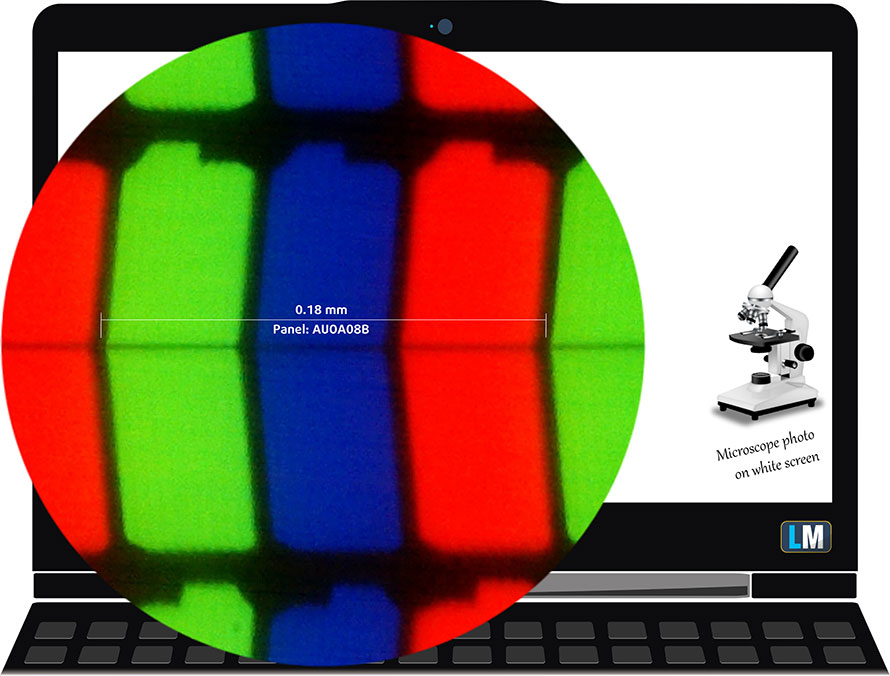
It has comfortable viewing angles. We offer images at 45° to evaluate image quality.

The measured maximum brightness of 408 nits in the middle of the screen and 396 nits as an average for the whole area, with a maximum deviation of 8%. The Correlated Color Temperature on a white screen is 6600K – slightly colder and almost matching the optimal for the sRGB standard of 6500K.
In the illustration below you can see how the display performs from a uniformity perspective. In other words, the leakage of light from the light source.
Values of dE2000 over 4.0 should not occur, and this parameter is one of the first you should check if you intend to use the laptop for color-sensitive work. The contrast ratio is good – 1640:1 (1540:1 after profiling).
To make sure we are on the same page, we would like to give you a little introduction to the sRGB color gamut and the Adobe RGB. To start, there’s the CIE 1976 Uniform Chromaticity Diagram that represents the visible specter of colors by the human eye, giving you a better perception of the color gamut coverage and the color accuracy.
Inside the black triangle, you will see the standard color gamut (sRGB) that is being used by millions of people in HDTV and on the web. As for the Adobe RGB, this is used in professional cameras, monitors, etc for printing. Basically, colors inside the black triangle are used by everyone and this is the essential part of the color quality and color accuracy of a mainstream notebook.
Still, we’ve included other color spaces like the famous DCI-P3 standard used by movie studios, as well as the digital UHD Rec.2020 standard. Rec.2020, however, is still a thing of the future and it’s difficult for today’s displays to cover that well. We’ve also included the so-called Michael Pointer gamut, or Pointer’s gamut, which represents the colors that naturally occur around us every day.
The yellow dotted line shows HP EliteBook 850 G7’s color gamut coverage.
Its display covers 97% of the sRGB/ITU-R BT.709 (web/HDTV standard) in CIE1976.
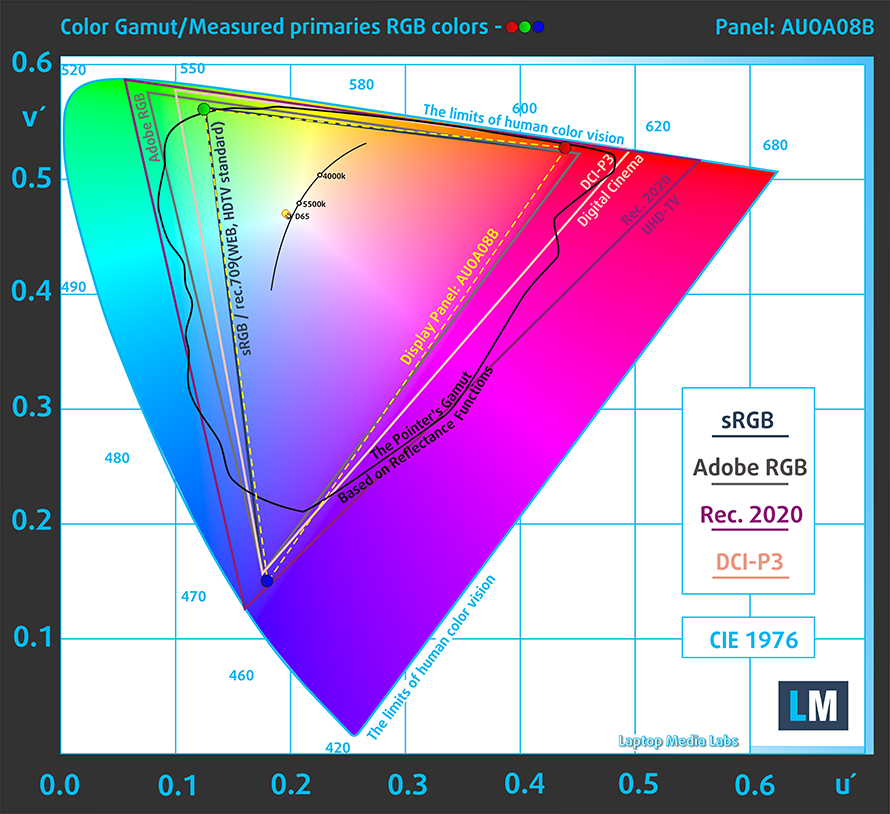
Our “Design and Gaming” profile delivers optimal color temperature (6500K) at 140 cd/m2 luminance and sRGB gamma mode.
We tested the accuracy of the display with 24 commonly used colors like light and dark human skin, blue sky, green grass, orange, etc. You can check out the results at factory condition and also, with the “Design and Gaming” profile.
Below you can compare the scores of HP EliteBook 850 G7 with the default settings (left), and with the “Gaming and Web design” profile (right).
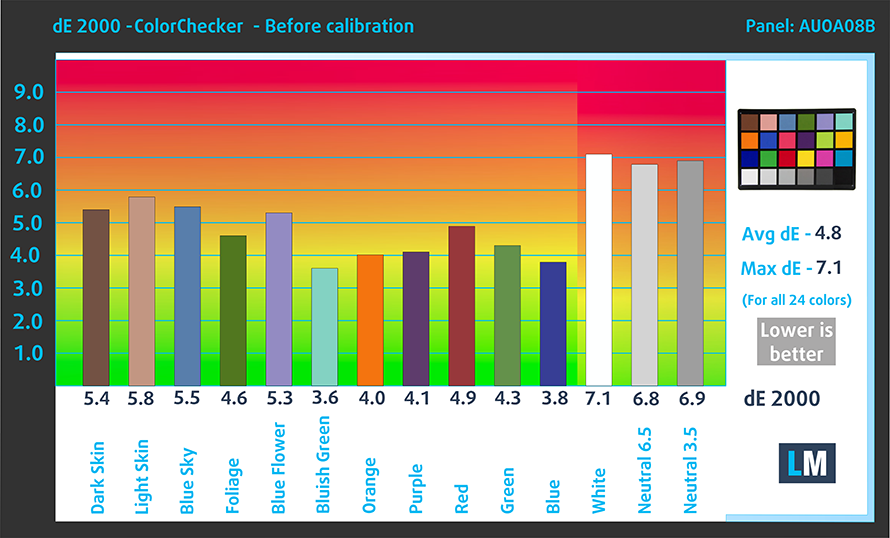
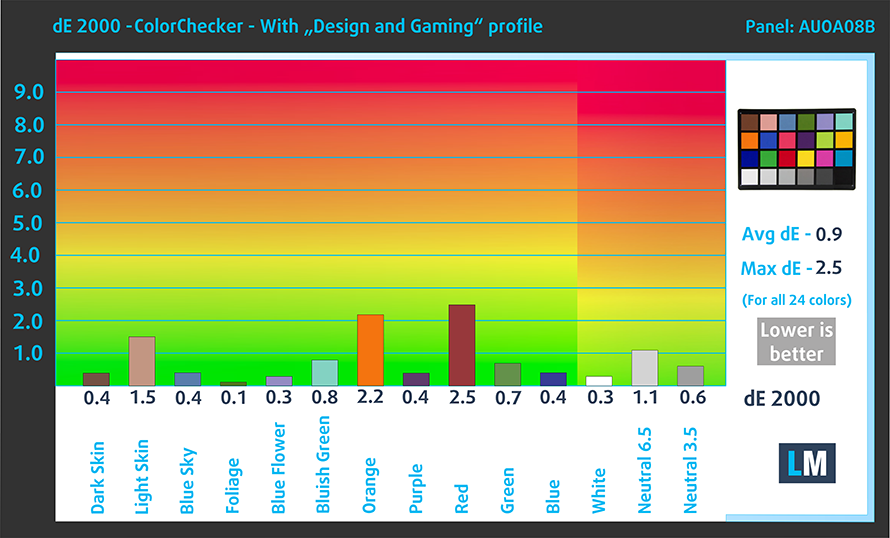
The next figure shows how well the display is able to reproduce really dark parts of an image, which is essential when watching movies or playing games in low ambient light.
The left side of the image represents the display with stock settings, while the right one is with the “Gaming and Web Design” profile activated. On the horizontal axis, you will find the grayscale, and on the vertical axis – the luminance of the display. On the two graphs below you can easily check for yourself how your display handles the darkest nuances but keep in mind that this also depends on the settings of your current display, the calibration, the viewing angle, and the surrounding light conditions.
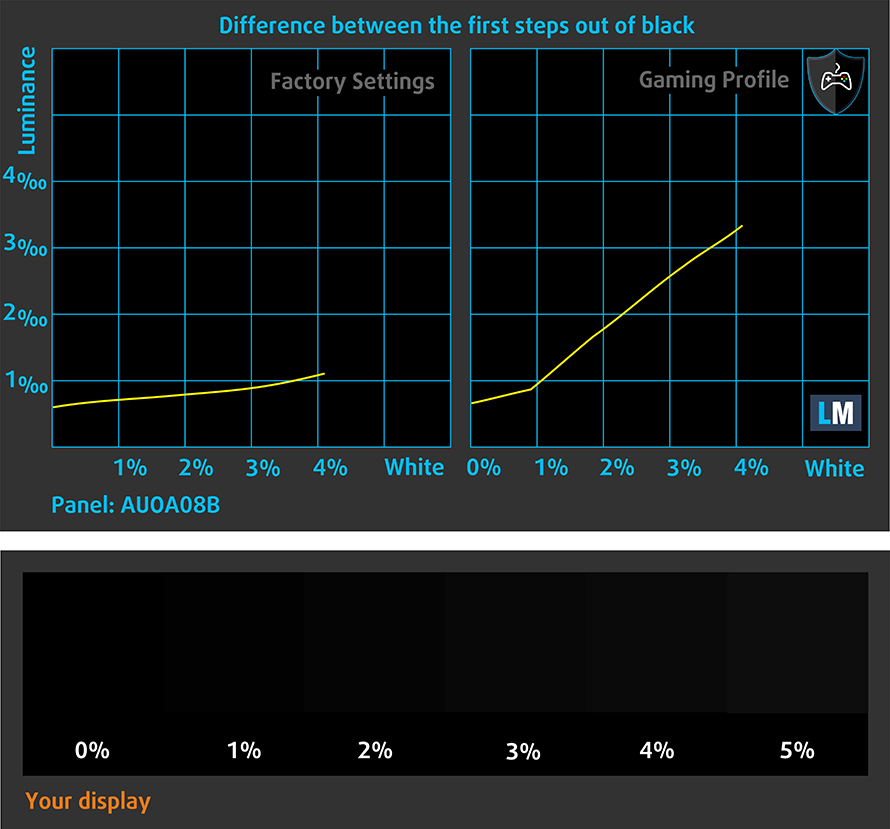
Response time (Gaming capabilities)
We test the reaction time of the pixels with the usual “black-to-white” and “white-to-black” method from 10% to 90% and vice versa.
We recorded Fall Time + Rise Time = 31 ms.

PWM (Screen flickering)
Pulse-width modulation (PWM) is an easy way to control monitor brightness. When you lower the brightness, the light intensity of the backlight is not lowered, but instead turned off and on by the electronics with a frequency indistinguishable to the human eye. In these light impulses, the light/no-light time ratio varies, while brightness remains unchanged, which is harmful to your eyes. You can read more about that in our dedicated article on PWM.
HP EliteBook 850 G7’s screen doesn’t flicker at any brightness level. Thankfully, this enables you to play for extended periods of time, without risk of further damaging your eyes and brain.
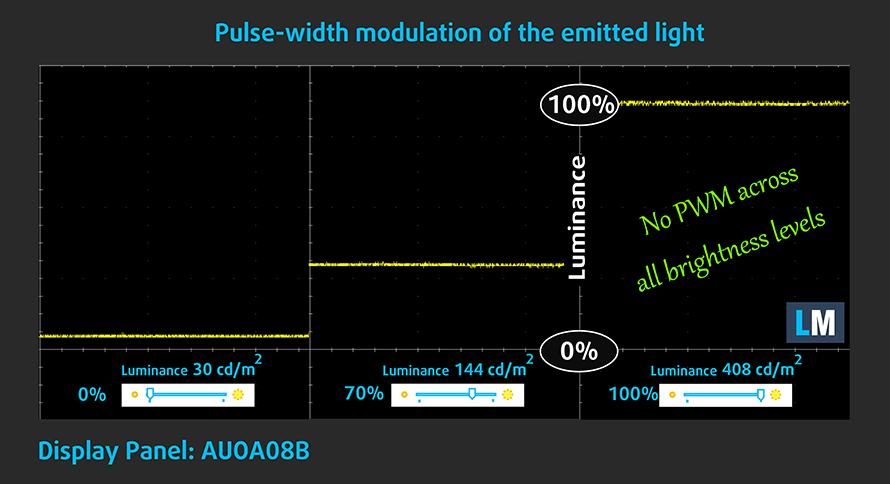
Blue light emissions
Installing our Health-Guard profile not only eliminates PWM but also reduces the harmful Blue Light emissions while keeping the colors of the screen perceptually accurate. If you’re not familiar with the Blue light, the TL;DR version is – emissions that negatively affect your eyes, skin, and your whole body. You can find more information about that in our dedicated article on Blue Light.
Conclusion
HP EliteBook 850 G7’s IPS panel has a Full HD resolution, relatively high maximum brightness (about 400 nits), good contrast ratio, and comfortable viewing angles. Moreover, it doesn’t use PWM to adjust its brightness levels, and it covers 97% of the sRGB color gamut. And with our Gaming and Web design profile applied, the laptop now complies with the standards when it comes to color accuracy. Its only downside is the pixel response time, but this is no gaming machine, so we can forgive it.
Buy our profiles
Since our profiles are tailored for each individual display model, this article and its respective profile package are meant for HP EliteBook 850 G7 configurations with 15.6″ FHD IPS AUO AUOA08B.
*Should you have problems with downloading the purchased file, try using a different browser to open the link you’ll receive via e-mail. If the download target is a .php file instead of an archive, change the file extension to .zip or contact us at [email protected].
Read more about the profiles HERE.
In addition to receiving efficient and health-friendly profiles, by buying LaptopMedia's products you also support the development of our labs, where we test devices in order to produce the most objective reviews possible.

Office Work
Office Work should be used mostly by users who spend most of the time looking at pieces of text, tables or just surfing. This profile aims to deliver better distinctness and clarity by keeping a flat gamma curve (2.20), native color temperature and perceptually accurate colors.

Design and Gaming
This profile is aimed at designers who work with colors professionally, and for games and movies as well. Design and Gaming takes display panels to their limits, making them as accurate as possible in the sRGB IEC61966-2-1 standard for Web and HDTV, at white point D65.

Health-Guard
Health-Guard eliminates the harmful Pulse-Width Modulation (PWM) and reduces the negative Blue Light which affects our eyes and body. Since it’s custom tailored for every panel, it manages to keep the colors perceptually accurate. Health-Guard simulates paper so the pressure on the eyes is greatly reduced.
Get all 3 profiles with 33% discount
Sound
HP EliteBook 850 G7’s speakers have a crisp, good quality sound. Its low, mid, and high tones are clear of deviations.
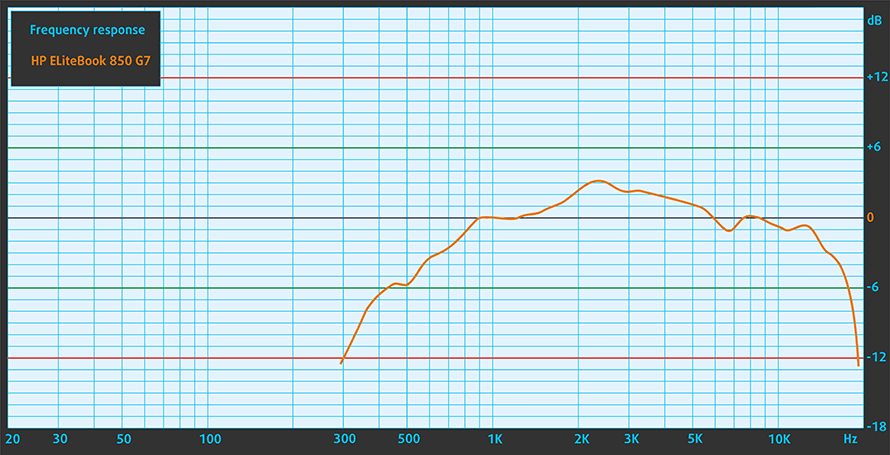
Drivers
All of the drivers and utilities for this notebook can be found here: https://support.hp.com/us-en/drivers/selfservice/hp-elitebook-850-g7-notebook-pc/33386506
Battery
Now, we conduct the battery tests with Windows Better performance setting turned on, screen brightness adjusted to 120 nits, and all other programs turned off except for the one we are testing the notebook with. This notebook’s 56Wh battery pack delivers 10 hours and 23 minutes of Web browsing and 13 hours and 20 minutes of video playback.
In order to simulate real-life conditions, we used our own script for automatic web browsing through over 70 websites.
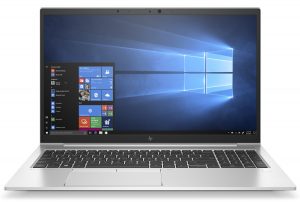

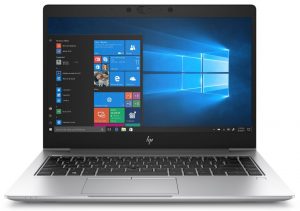

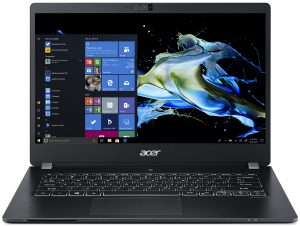
For every test like this, we use the same video in HD.





CPU options
This notebook’s processors are part of the Comet Lake-U lineup from Intel. They include the Core i5-10210U, Core i7-10510U, as well as the vPro models – Core i5-10310U, Core i7-10610U, and Core i7-10810U.
Results are from the Cinebench 20 CPU test (the higher the score, the better)
Results are from our Photoshop benchmark test (the lower the score, the better)
HP EliteBook 850 G7 CPU variants
Here you can see an approximate comparison between the CPUs that can be found in the HP EliteBook 850 G7 models on the market. This way you can decide for yourself which HP EliteBook 850 G7 model is the best bang for your buck.
Note: The chart shows the cheapest different CPU configurations so you should check what the other specifications of these laptops are by clicking on the laptop’s name / CPU.
Results are from the Cinebench 20 CPU test (the higher the score, the better)
Results are from our Photoshop benchmark test (the lower the score, the better)
GPU options
As of the graphics cards, you can either get only an Intel UHD Graphics unit, or you can buy the laptop with the GeForce MX250 (25W).
Results are from the 3DMark: Time Spy (Graphics) benchmark (higher the score, the better)
Results are from the 3DMark: Fire Strike (Graphics) benchmark (higher the score, the better)
Results are from the Unigine Superposition benchmark (higher the score, the better)
Gaming tests

| CS:GO | HD 1080p, Low (Check settings) | HD 1080p, Medium (Check settings) | HD 1080p, MAX (Check settings) |
|---|---|---|---|
| Average fps | 115 fps | 94 fps | 76 fps |

| DOTA 2 | HD 1080p, Low (Check settings) | HD 1080p, Normal (Check settings) | HD 1080p, High (Check settings) |
|---|---|---|---|
| Average fps | 106 fps | 85 fps | 64 fps |
Temperatures and comfort
Max CPU load
In this test we use 100% on the CPU cores, monitoring their frequencies and chip temperature. The first column shows a computer’s reaction to a short load (2-10 seconds), the second column simulates a serious task (between 15 and 30 seconds), and the third column is a good indicator of how good the laptop is for long loads such as video rendering.
Average core frequency (base frequency + X); CPU temp.
| Intel Core i7-10510U (15W TDP) | 0:02 – 0:10 sec | 0:15 – 0:30 sec | 10:00 – 15:00 min |
|---|---|---|---|
| HP EliteBook 850 G7 | 3.21 GHz (B+78%) @ 76°C | 1.92 GHz (B+7%) @ 57°C | 1.96 GHz (B+9%) @ 57°C |
| HP Envy x360 15 (15-ed0000) | 3.24 GHz (B+80%) @ 71°C | 2.03 GHz (B+13%) @ 59°C | 2.07 GHz (B+15%) @ 62°C |
| HP Envy 13 (13-ba0000) | 3.30 GHz (B+83%) @ 83°C | 1.87 GHz (B+4%) @ 60°C | 1.72 GHz @ 65°C |
| Fujitsu LifeBook U7410 | 3.05 GHz (B+69%) @ 86°C | 2.65 GHz (B+47%) @ 96°C | 1.94 GHz (B+8%) @ 79°C |
| ASUS ZenBook Flip 14 UX463 | 3.50 GHz (B+94%) @ 92°C | 2.97 GHz (B+65%) @ 95°C | 2.31 GHz (B+28%) @ 73°C |
| Dell Inspiron 14 5490 | 3.62 GHz (B+101%) @ 80°C | 2.39 GHz (B+37%) @ 74°C | 1.92 GHz (B+7%) @ 65°C |
| Dell Inspiron 13 7391 2-in-1 | 3.50 GHz (B+94%) @ 98°C | 2.27 GHz (B+26%) @ 82°C | 2.09 GHz (B+16%) @ 79°C |
| Dell XPS 13 7390 | 3.62 GHz (B+101%) @ 89°C | 3.16 GHz (B+76%) @ 99°C | 2.70 GHz (B+50%) @ 85°C |
| Dell Vostro 5490 | 3.57 GHz (B+98%) @ 90°C | 2.51 GHz (B+39%) @ 87°C | 2.10 GHz (B+17%) @ 66°C |
Once again, HP is going for GPU headroom when adjusting the thermals for their processor. Hence, we get low temperatures and relatively low frequency at the end of the test.
Real-life gaming
| NVIDIA GeForce MX250 | GPU frequency/ Core temp (after 2 min) | GPU frequency/ Core temp (after 30 min) |
|---|---|---|
| HP EliteBook 850 G7 | 1645 MHz @ 79°C | 1645 MHz @ 83°C |
| HP ProBook 450 G7 | 1458 MHz @ 74°C | 1462 MHz @ 74°C |
| HP Pavilion 15 (15-cs3000) | 1610 MHz @ 74°C | 1544 MHz @ 74°C |
| HP Pavilion 15-cs2000 | 1683 MHz @ 73°C | 1617 MHz @ 74°C |
| Acer Aspire 5 (A515-54G) | 1297 MHz @ 74°C | 1139 MHz @ 74°C |
| Lenovo Ideapad S540 (15) | 1608 MHz @ 69°C | 1404 MHz @ 59°C |
| ASUS VivoBook S15 S532 | 1708 MHz @ 77°C | 1480 MHz @ 67°C |
Well, we are happy with the frequency this model manages to achieve. However, 83C seems a bit too hot for our likings.
Comfort during combined load
Ultimately, this results in a warm keyboard, which reaches a temperature of above 50C.
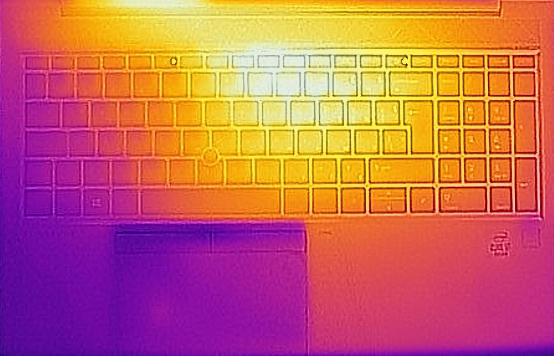
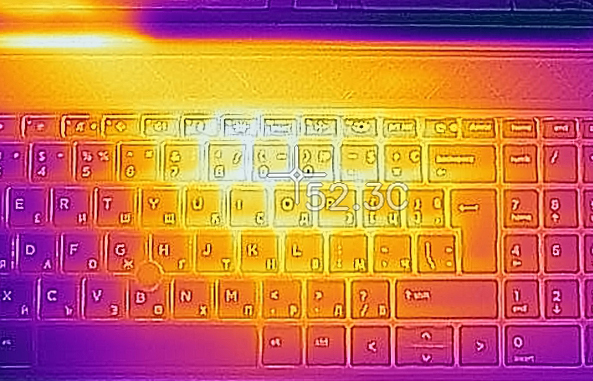
Verdict
Surely, you won’t be getting this laptop if you are a gamer, or you just need an all-rounder for browsing the Web and light gaming. Instead, it is aimed at business people, and in our opinion, it can be used by professionals from the art world.
Its input devices are generally great if we take the Power button location out of consideration. Additionally, you will be able to upgrade the memory with up to 64GB of DDR4 RAM, which is a humongous amount for a laptop. Ultimately, this means that developers and cybersecurity employees will get pretty much all they need from this machine.
HP EliteBook 850 G7’s IPS panel (AUO AUOA08B) has a Full HD resolution, relatively high maximum brightness (about 400 nits), good contrast ratio, and comfortable viewing angles. Moreover, it doesn’t use PWM to adjust its brightness levels, and it covers 97% of the sRGB color gamut. And with our Gaming and Web design profile applied, the laptop now complies with the standards when it comes to color accuracy. Its only downside is the pixel response time, but this is no gaming machine, so we can forgive it.
Not only that, but the battery life is decent with more than 10 hours of Web browsing and more than 14 hours of video playback.
So, combining all of the aforementioned with the IR face recognition, fingerprint reader, HP Client Security, the Smart Card Reader, and optional LTE support, results in a great business machine with very little left to be desired.
Pros
- Doesn’t use PWM for brightness adjustment (AUO AUOA08B)
- Covers 97% of the sRGB gamut (AUO AUOA08B)
- Good battery life
- Supports up to 64GB of DDR4 memory
- Decent build quality
- High maximum brightness (408 nits) and great color accuracy with our Gaming and Web design profile (AUO AUOA08B)A
- Optional IR face recognition and fingerprint reader
Cons
- Our unit had an issue with the buttons above the touchpad
- Lacks an SD card reader
- The cooling struggles with combined load scenarios
You can check the prices and configurations in our Specs System: https://laptopmedia.com/series/hp-elitebook-850-g7/


